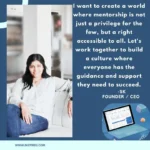Learn how to build a diverse innovation team with three practical strategies to boost your creativity by 20%. By leveraging the power of diverse perspectives, you can unleash fresh ideas and achieve superior outcomes for your organization. HighlightsBenefits of building a diverse and inclusive innovation teamBarriers to building a diverse and inclusive innovation teamPractical strategies...
RELATED ARTICLES
© NewInAsia.com 2025








